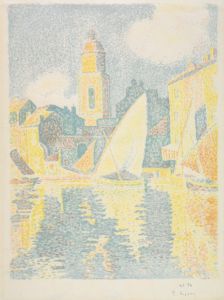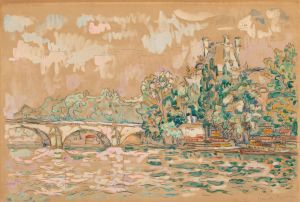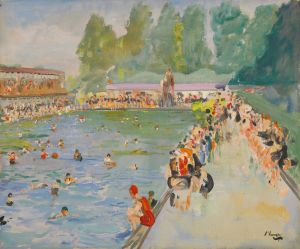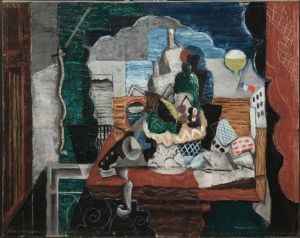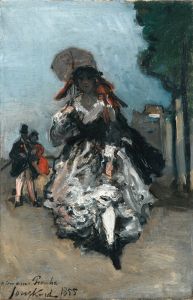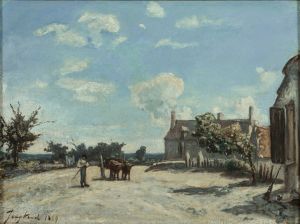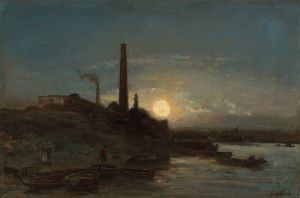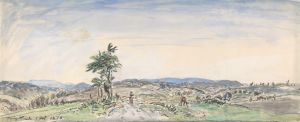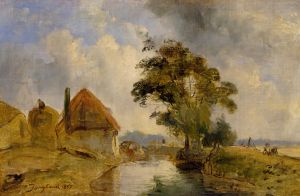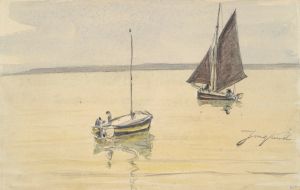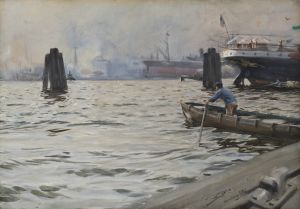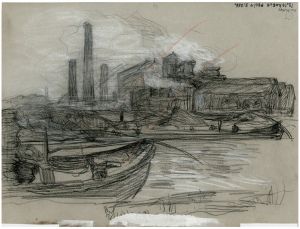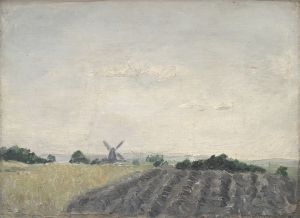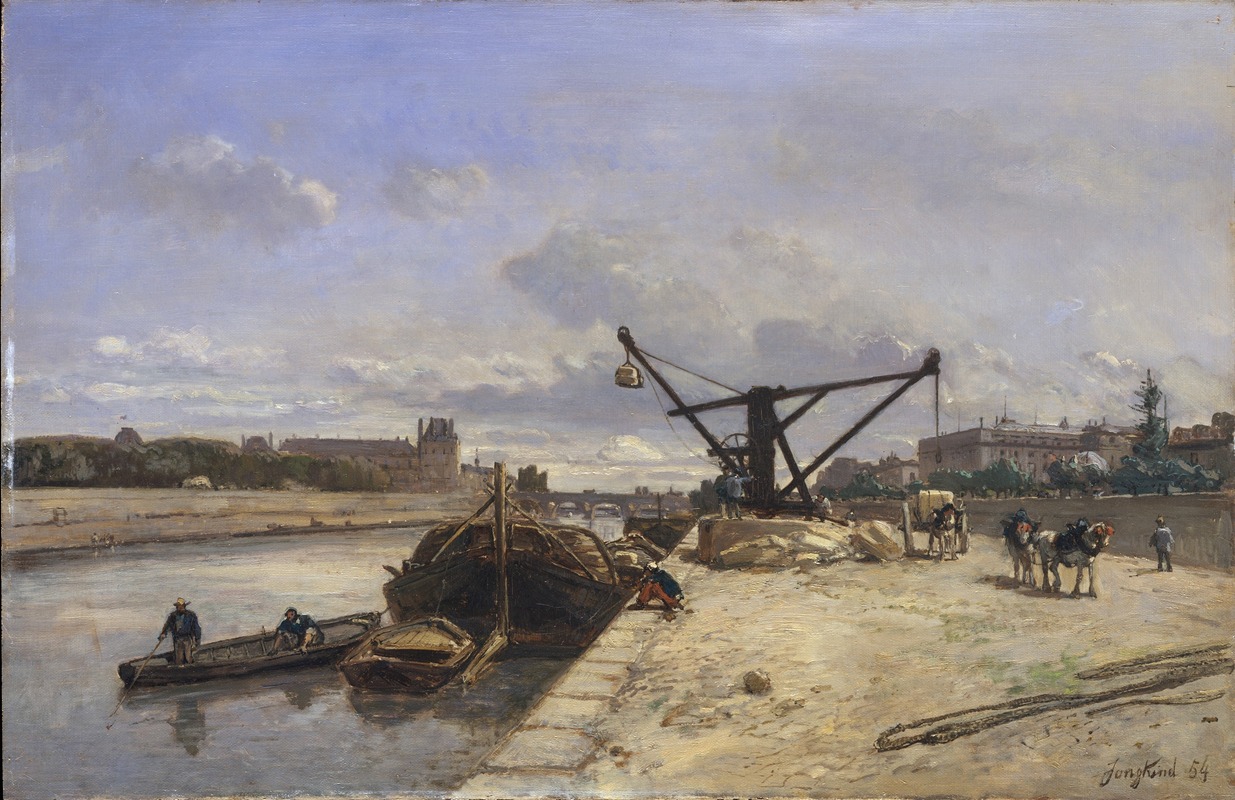
View from the Quai d’Orsay
A hand-painted replica of Johan Barthold Jongkind’s masterpiece View from the Quai d’Orsay, meticulously crafted by professional artists to capture the true essence of the original. Each piece is created with museum-quality canvas and rare mineral pigments, carefully painted by experienced artists with delicate brushstrokes and rich, layered colors to perfectly recreate the texture of the original artwork. Unlike machine-printed reproductions, this hand-painted version brings the painting to life, infused with the artist’s emotions and skill in every stroke. Whether for personal collection or home decoration, it instantly elevates the artistic atmosphere of any space.
"View from the Quai d’Orsay" is a painting by the Dutch artist Johan Barthold Jongkind, created in 1854. Jongkind is often associated with the Impressionist movement, although he is technically considered a precursor to the movement. His work is known for its innovative use of light and atmosphere, which had a significant influence on many Impressionist painters, including Claude Monet.
Johan Barthold Jongkind was born on June 3, 1819, in Lattrop, Netherlands. He initially studied at the Academy of Fine Arts in The Hague before moving to Paris in 1846, where he became a student of the French landscape painter Eugène Isabey. Jongkind's time in Paris exposed him to the works of the Barbizon School, which greatly influenced his approach to painting landscapes and urban scenes.
"View from the Quai d’Orsay" depicts a scene along the Quai d’Orsay, a quay located on the left bank of the Seine River in Paris. The painting captures the essence of mid-19th century Paris, with its bustling river traffic and architectural landmarks. Jongkind's use of light and reflection in the water is particularly notable, showcasing his skill in rendering atmospheric effects.
The painting is characterized by its loose brushwork and vibrant color palette, which were innovative for the time. Jongkind's ability to capture the transient effects of light on water and his focus on the atmospheric conditions of the scene were pioneering techniques that would later be embraced by the Impressionists. His work often featured urban landscapes, rivers, and coastal scenes, reflecting his fascination with the interplay between natural and man-made environments.
Jongkind's influence on the Impressionist movement cannot be overstated. His approach to painting en plein air (outdoors) and his emphasis on capturing the fleeting effects of light were techniques that would become central to the Impressionist style. Claude Monet, in particular, admired Jongkind's work and considered him a mentor. Monet once remarked that Jongkind had taught him "the understanding of light and the true way to capture it."
"View from the Quai d’Orsay" is an excellent example of Jongkind's mature style, showcasing his ability to blend detailed observation with a more spontaneous, expressive technique. The painting's composition, with its focus on the river and the buildings along the quay, reflects Jongkind's interest in the dynamic relationship between the natural and urban landscapes.
Today, Johan Barthold Jongkind is recognized as a pivotal figure in the transition from traditional landscape painting to the more modern approaches of the Impressionists. His innovative techniques and his dedication to capturing the ephemeral qualities of light and atmosphere have earned him a lasting place in the history of art.
"View from the Quai d’Orsay" remains an important work within Jongkind's oeuvre, exemplifying his contributions to the development of modern landscape painting. The painting is held in various collections and continues to be studied and admired for its historical significance and artistic merit.





